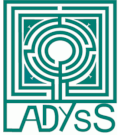The Tibetan Plateau is one of the world’s most important foci of human echinococcosis, and both cystic (囊型包虫病, náng xíng bāo chóng bìng) and alveolar (泡型包虫病, pào xíng bāo chóng bìng) echinococcosis occur.
Many members of the IRN EHEDE participated to research carried out there from 2001 to 2008 as part of the US National Institutes of Health (Fogarty Institute) programme "Ecology of infectious disease". Studies found that the canine echinococcosis (Em and Eg all together) rate exceeded 20% in some communities (...)
Home > Programmes > E. multilocularis transmission in Asia
E. multilocularis transmission in Asia
Articles in this section
-
 Tibetan plateau
Tibetan plateau -
 Ningxia
NingxiaDoes environmental change drive the spatiotemporal transmission dynamics of Echinococcus spp. in Ningxia, China?
A large focus of human alveolar echinoccocosis has been discovered in the 90s in Xiji county and close surroundings, in the south of the Ningxia Hui Autonomous Region of China (NHAR). Our researches carried out in the early 2000 pieced together indications that this hotspot of more than 3300 km2 was the consequence of a landscape change in the 80s (see eg Pleydell et al. 2008). (...) -
 Kyrgyzstan
KyrgyzstanLarge foci of transmission have been discovered in Western China since the 80’s and in Central Asia (Kyrgyzstan, Kazakhstan, etc.) more recently. Human echinococcosis is increasing in Kyrgyzstan, with many new cases in the country’s South. Little is known on the ecology of hosts and parasites in those areas. This programme is supported by the Wellcome Trust.
2012, May 7-23 : first field work in the Alay valley, Pamir, Kyrgyzstan, and follow up
A multidisciplinary team travelled to the Alay (...) -
 Long term monitoring in south Gansu, China
Long term monitoring in south Gansu, ChinaTwenty years after: pilot study in south Gansu, China, to monitor the transmission ecology of alveolar echinococcosis.
29th May 2014
Echinococcus multilocularis is a parasite that circulates between hosts that harbor the adult form, like fox and dog, and hosts who host the larval form, such as rodents and some species of lagomorphs. Absorption of parasite eggs, voided into the environment through fox and dog faeces leads to a severe disease, alveolar echinococcosis, which has been (...)









